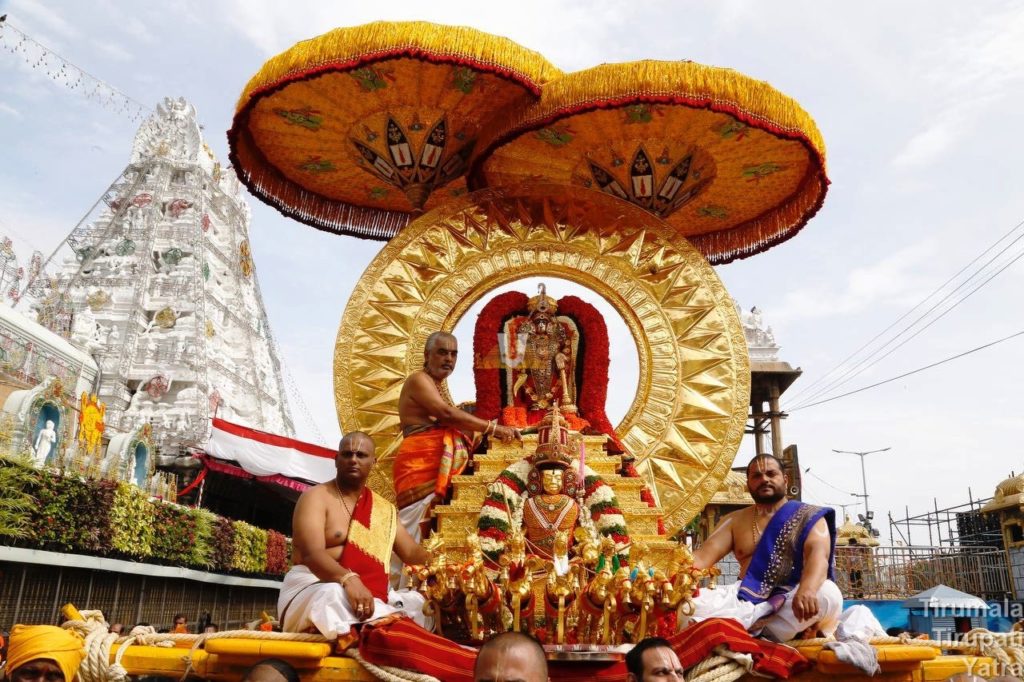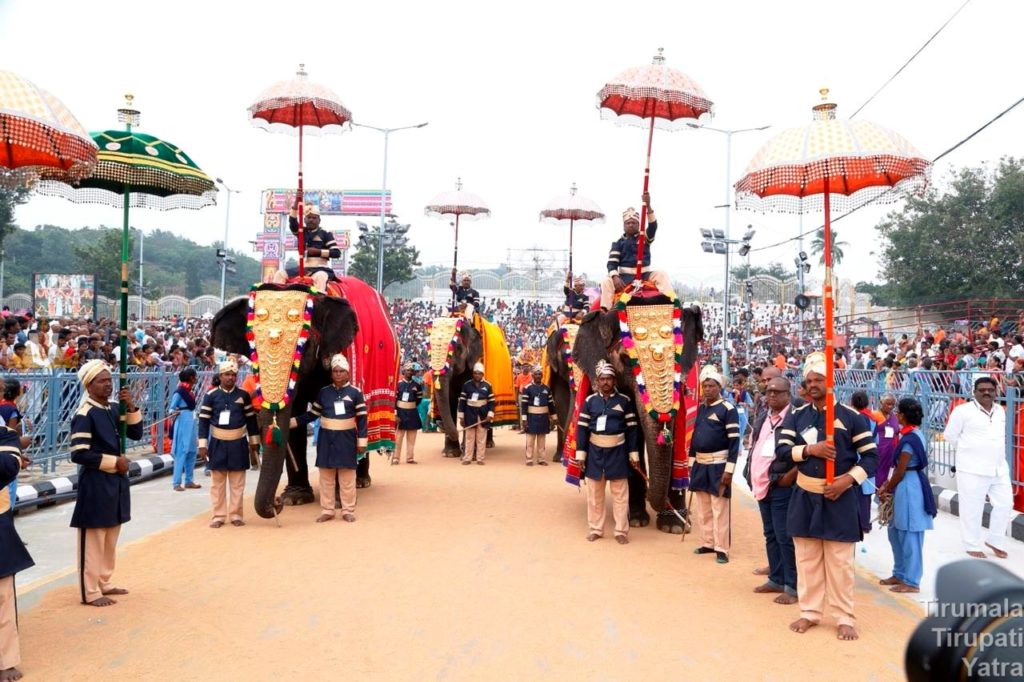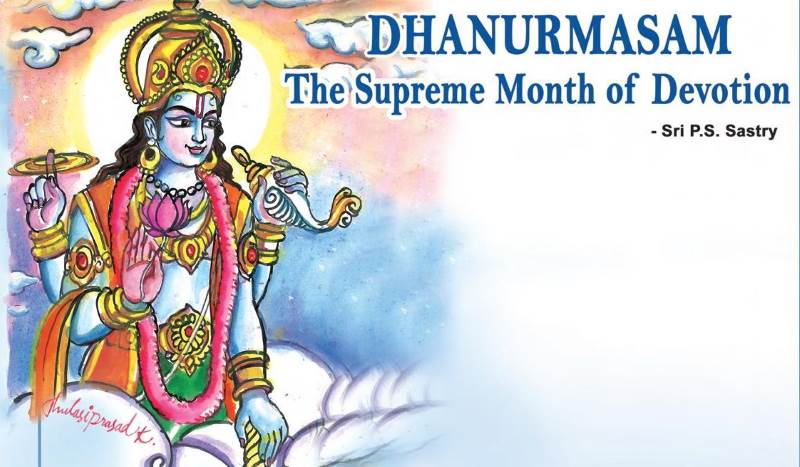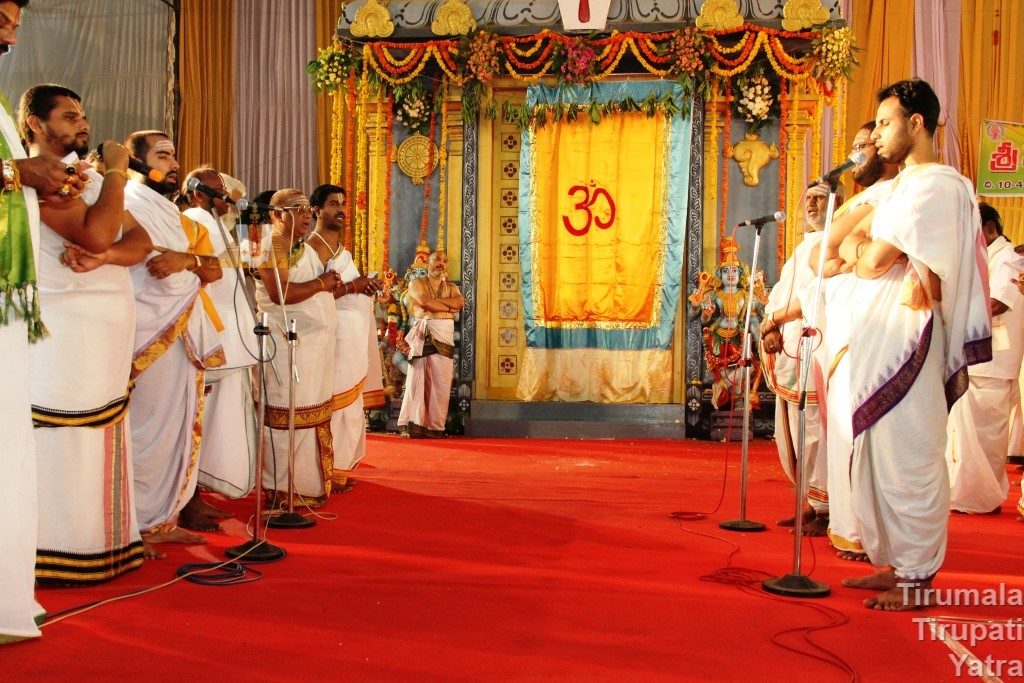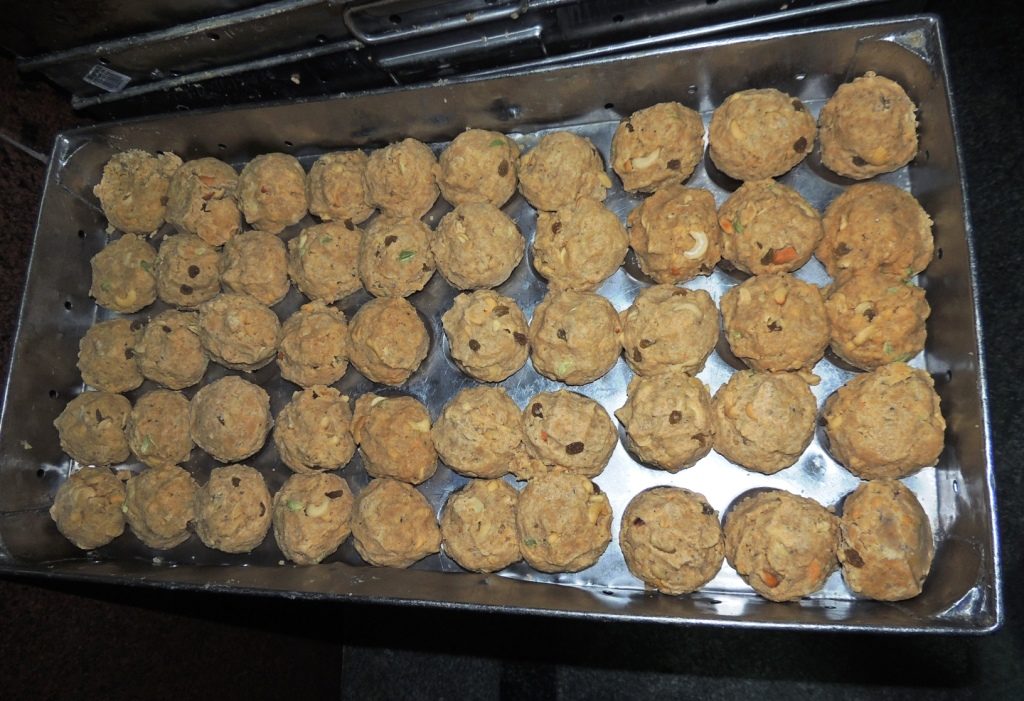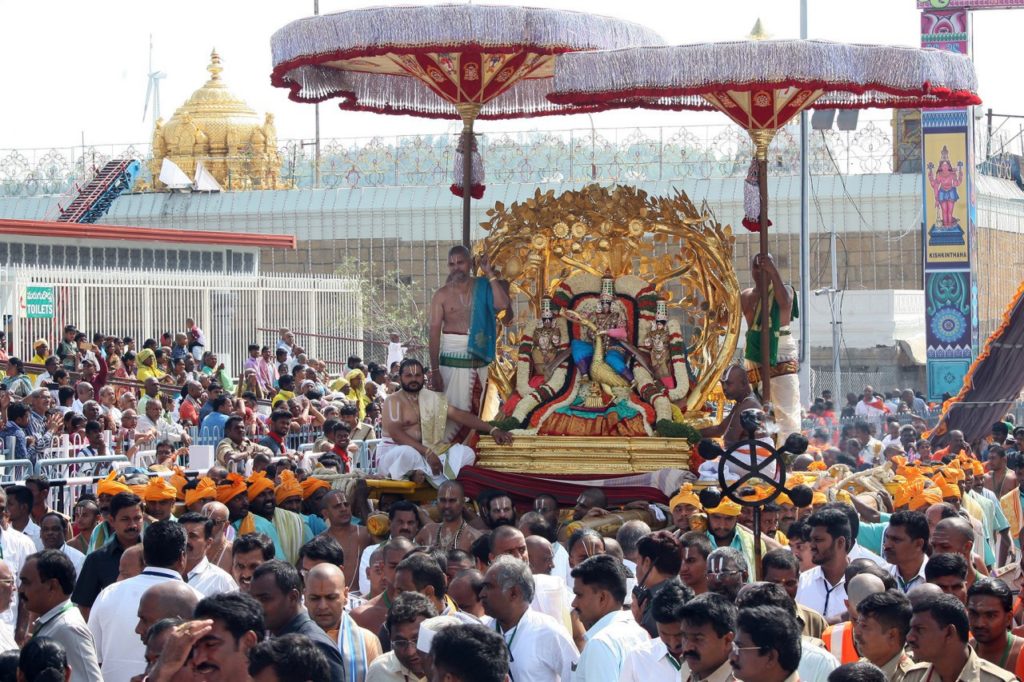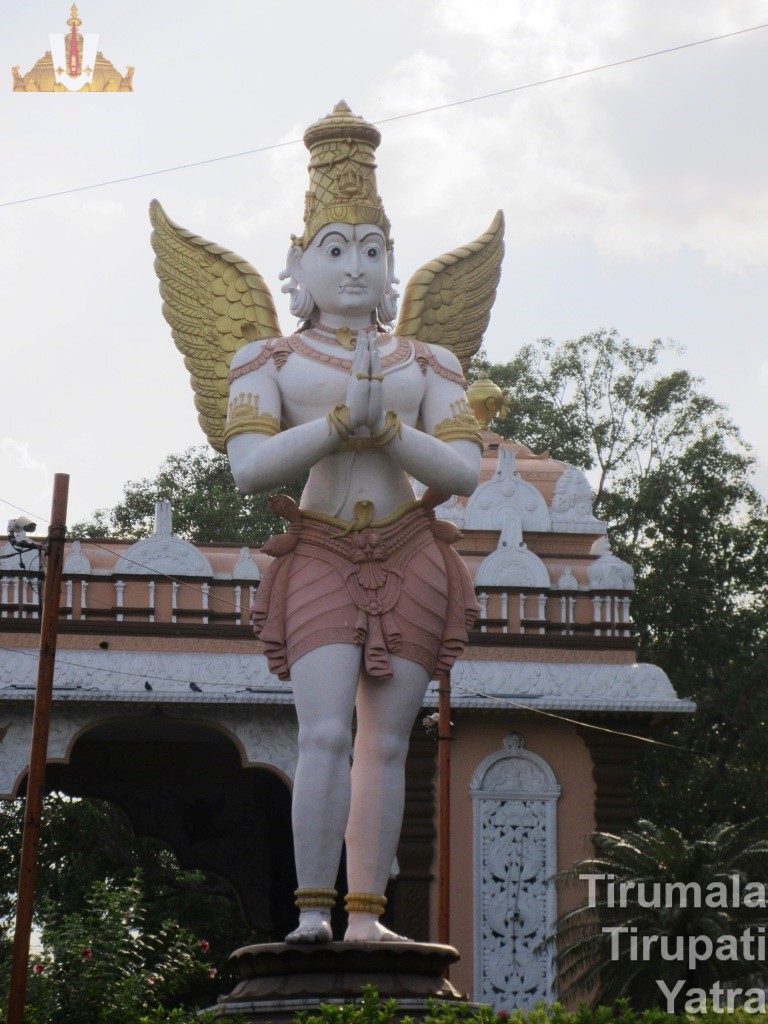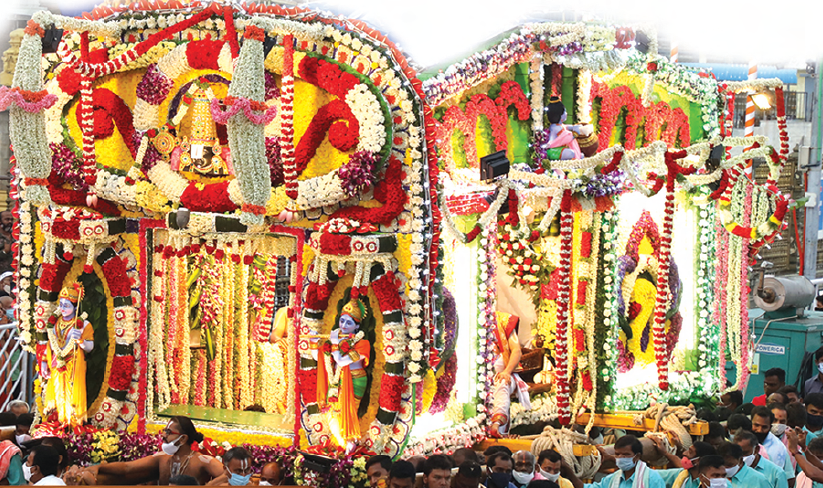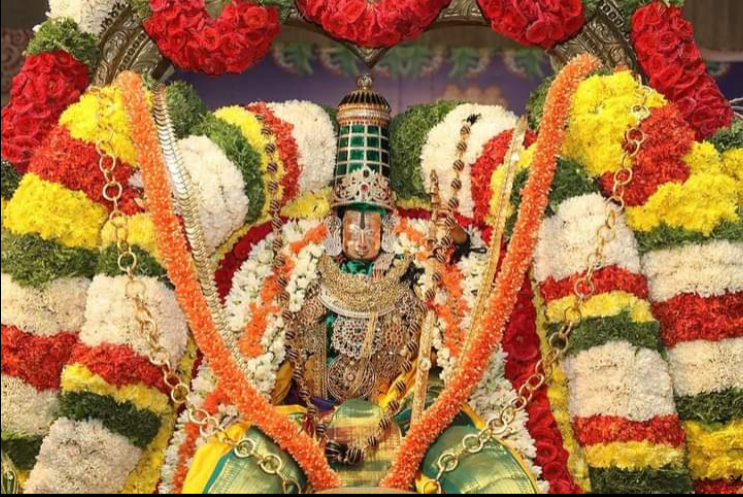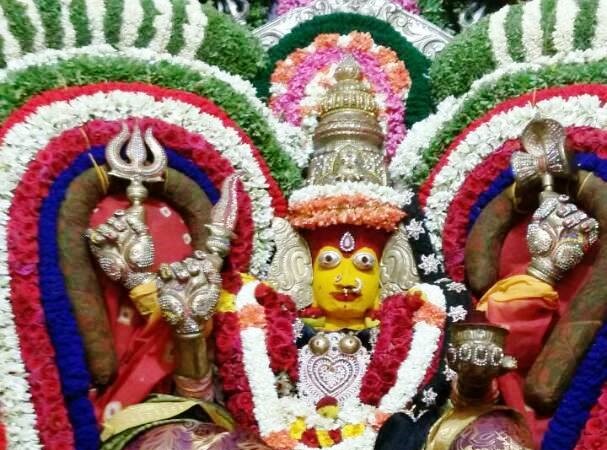Navamam Navaratnamcha Brahma cha Kamalasanah NidhiGrahascha Khandamcha Randhro Bhavascha Labdhakah Navamam, Navaratnam, Brahma, Kamalasana, Nidhih, Grahah, Khanda, Randhra, Bhava and Labdhakah-these ten are the names of number nine. In the Dictionary of Symbols, the name Brahma indicates nine Brahmas and thereby, the number nine. The festival celebrated by Brahma in the name of Sri Venkateswara went Read More
Tag: tirupati
Tirupati is a city in the Indian state of Andhra Pradesh. It is the administrative headquarters of the Tirupati district
Definition of Brahmotsavam
Brahmotsavam Brahma the creator, with the sun then transiting Virgo (Kanya), the month of Aswayuja as per the Chandramana (the Lunar Calender), fixing Avabhritha (Chakrasnana or the holy dip of the disc) in star sravana, the star of Srimannarayana’s incarnation, having invited divine sages like Vaikhanasa, Bhrigu, and Maricha, as its priests (ritviks), on Suklapaksha Read More
Dhanurmasam – The Supreme Month of Devotion
What is Dhanurmasam In Vedic texts, the ‘Dhanus’ month is called ‘Sahas’. In Sanskrit ‘Dhanus’ stands for a bow. ‘Dhanu’ is also an astrological sign in Indian horoscope systems, corresponding to Sagittarius. It is preceded by the solar month of ‘Vrischika’ and followed by ‘Makara’. It is also called ‘Margali Masam’ in Tamil. Dhanurmasa occurs Read More
Suprabhata Seva
Lord Venkateswara who is present on the seven hills blessing all human beings is the protector of the whole universe. Every day several festivals and ceremonies are performed to Him per the diktats of Vaikhasana and Vedic traditions. Several festivals and ceremonies are performed to ward off the evils of humans. There is no other Read More
Tasty Prasadams
Lord Venkateswara likes Beautiful Decorations, Joyful Festivities Tasty Prasadams, Hence Daily Offerings & Naivedyams are being performed. The Madras Government first started distributing sweet Bhoondi (Laddu podi) to devotees as Srivari prasadam in 1803. From that time the sale of prasadams began. Dittam In 1933, after the establishment of the T.T.D. Trust Board to Srivari temple, Read More
Highlights of Brahmotsavams 2017
Brahmotsavams Once a year, the Brahmotsavams are celebrated to Lord Venkateswara. In the procession, the Lord takes a majestically reclined posture on the various ‘vahanams’ (this page is dedicated to Chinna Sesha Vahanam) offered by the deities. ‘Padakavita Pitamaha’ Annamacharya eulogizes Lord Venkateswara as ‘Tiruveedullo merese Devadevudu,’ and ‘Naanaadikkula Narulella vaanalalone vatturu.’ Lord Brahma initiates Read More
Garuda – Vehicle of Sri Maha Vishnu
Garuda – Huge Idol In Alipiri, on the way to Tirumala, we find the huge Statue of Garuthmantha in all his majesty. It is suggestive of “I am here to carry forward all your requisitions to Lord Srinivasa. Brahmotsavams and on Purnima Day Among all Vahana sevas performed to Sri Venkateswara Swamy, Garuda Seva Read More
Importance of Anivara Asthanam
Anivara Asthanam – Importance The uniqueness of the festival is that the previous year’s accounts of the temple are presented before the Lord Sri Venkateswara Swamy. New account books will also be presented at the feet of the Lord for recording the accounts of the next financial year. The entire process is called ‘Asthanam’ which Read More
Sri Kodandarama Swamy, Tirupati
Sri Kodandarama Swamy – ISTAARTHA RAMUDU There are many famous temples in and around Tirupati. Sri Kodandarama Swamy Temple is one of the famous and ancient historical temples, 1.5 km from Tirupati Railway station. By Worshipping Sri Kodanda Ramachandra Murthi of this temple, the desires of the devotees will be fulfilled. The god of this Read More
Sri Tataiahgunta Gangamma – Sister of Lord Srinivasa
Tataiahgunta Gangamma Gangamma the deity of Tatayyagunta is the sister of the God of Tirumala. ‘Saare’ i.e., traditional gifts are sent by Her Brother of Tirumala to the local festival called ‘Ganga Jatara’ every year. These traditional gifts halt first at the temple of Govindaraja Swami in Tirupati and then are taken to the temple Read More
